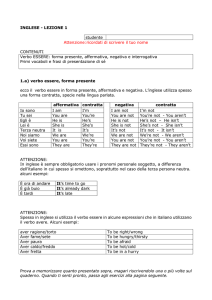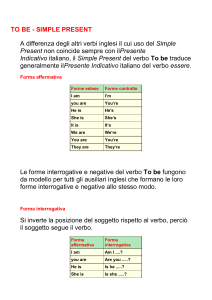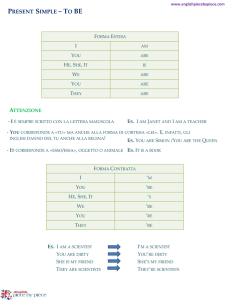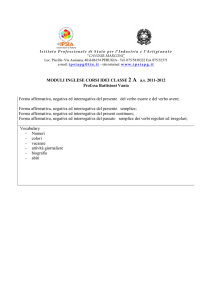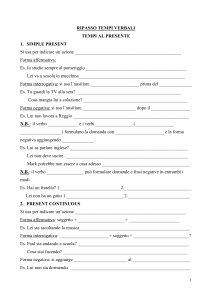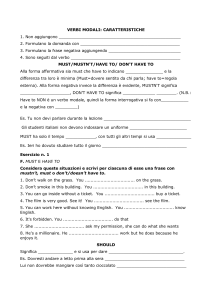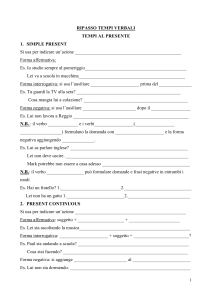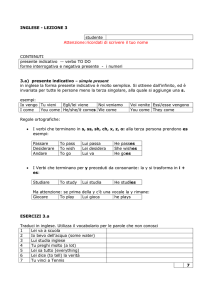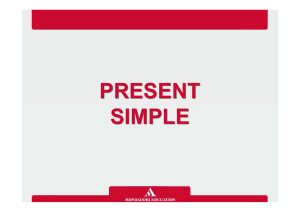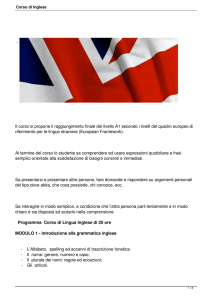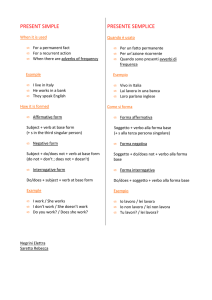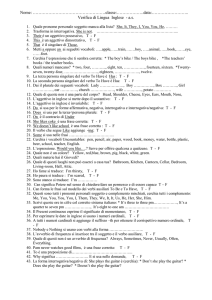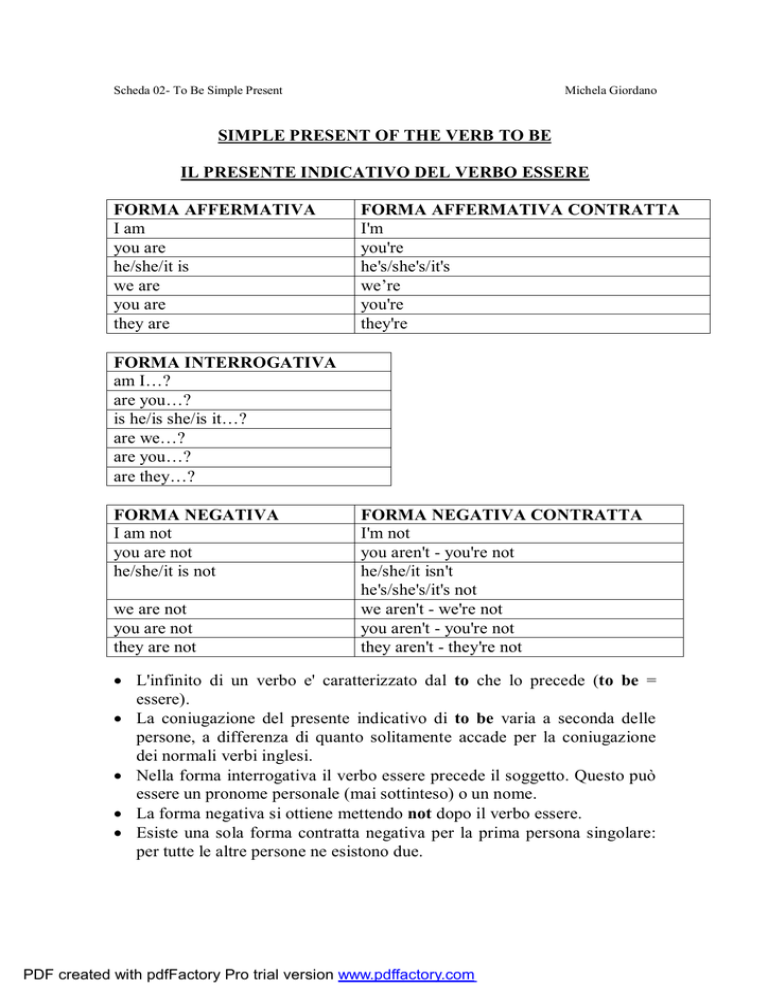
Scheda 02- To Be Simple Present
Michela Giordano
SIMPLE PRESENT OF THE VERB TO BE
IL PRESENTE INDICATIVO DEL VERBO ESSERE
FORMA AFFERMATIVA
I am
you are
he/she/it is
we are
you are
they are
FORMA AFFERMATIVA CONTRATTA
I'm
you're
he's/she's/it's
we’re
you're
they're
FORMA INTERROGATIVA
am I…?
are you…?
is he/is she/is it…?
are we…?
are you…?
are they…?
FORMA NEGATIVA
I am not
you are not
he/she/it is not
we are not
you are not
they are not
FORMA NEGATIVA CONTRATTA
I'm not
you aren't - you're not
he/she/it isn't
he's/she's/it's not
we aren't - we're not
you aren't - you're not
they aren't - they're not
• L'infinito di un verbo e' caratterizzato dal to che lo precede (to be =
essere).
• La coniugazione del presente indicativo di to be varia a seconda delle
persone, a differenza di quanto solitamente accade per la coniugazione
dei normali verbi inglesi.
• Nella forma interrogativa il verbo essere precede il soggetto. Questo può
essere un pronome personale (mai sottinteso) o un nome.
• La forma negativa si ottiene mettendo not dopo il verbo essere.
• Esiste una sola forma contratta negativa per la prima persona singolare:
per tutte le altre persone ne esistono due.
PDF created with pdfFactory Pro trial version www.pdffactory.com

